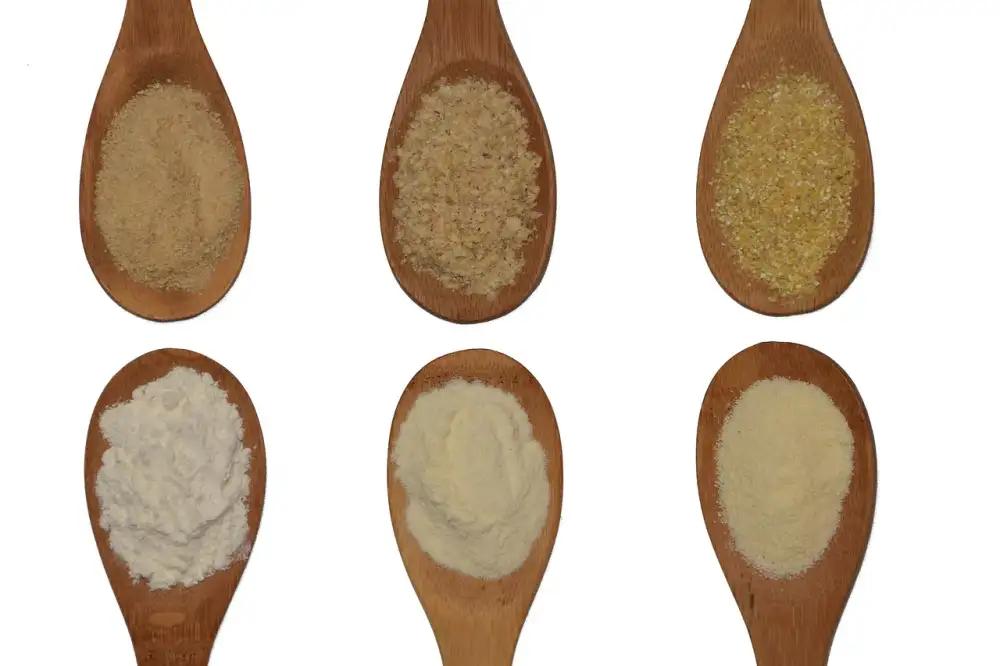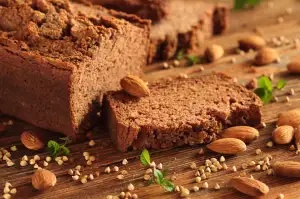Couscous: Unveiling the Delights of this Exquisite North African Dish

- Origins and Cultural Significance of Couscous
- Ingredients Used in Couscous Preparation
- Traditional Cooking Methods for Couscous
- Popular Variations of Couscous Recipes
- Health Benefits of Consuming Couscous
- Serving Suggestions and Pairings for Couscous
- Tips for Cooking Perfect Couscous
- Exploring Global Couscous Influences
Couscous, a staple dish in North African cuisine, is gaining popularity worldwide for its unique flavors and versatility. This delightful grain-based dish has a rich history and is loved for its fluffy texture and ability to absorb flavors. Whether enjoyed as a main course or a side dish, couscous offers a delightful culinary experience that transports your taste buds to the vibrant streets of Morocco, Tunisia, and Algeria. Join us on a journey as we unveil the delights of this exquisite North African dish.
Origins and Cultural Significance of Couscous
Couscous, a staple in North African cuisine, has a rich history and cultural significance. Its origins can be traced back to the Berber people of ancient times, who inhabited the regions of Morocco, Algeria, Tunisia, and Libya. For centuries, couscous has been an integral part of their diet and a symbol of hospitality and togetherness.
In Berber culture, couscous holds great importance as it is often served during special occasions and celebrations. It is considered a communal dish that brings families and friends together around a shared meal. The preparation of couscous is seen as an art form, passed down through generations with pride.
Beyond its cultural significance, couscous also played a vital role in sustaining nomadic communities across the arid landscapes of North Africa. Its long shelf life and ease of preparation made it an ideal food for travelers and traders on long journeys.
Today, couscous continues to be cherished by North African communities worldwide as a symbol of their heritage. It has also gained popularity globally as people embrace its unique flavors and versatility in various cuisines. The cultural significance of couscous serves as a reminder of the diverse culinary traditions that have shaped our world.
Ingredients Used in Couscous Preparation
Couscous, the beloved North African dish, is made using a handful of simple yet flavorful ingredients. The main ingredient is semolina, which is a coarse wheat flour. This gives couscous its distinct texture and nutty flavor. Other common ingredients include water or broth for cooking, olive oil for added richness, and salt for seasoning. Vegetables like carrots, onions, and tomatoes are often added to enhance the taste and add color to the dish. Spices such as cumin, coriander, and turmeric are also commonly used to infuse couscous with aromatic flavors. With just a few basic ingredients, couscous transforms into a delightful culinary masterpiece.
Traditional Cooking Methods for Couscous
Couscous, a staple dish in North African cuisine, is traditionally cooked using a special pot called a couscoussier. This unique cooking vessel consists of two parts: a bottom pot for simmering the stew and a perforated top pot for steaming the couscous.
To prepare couscous, the bottom pot is filled with flavorful broth or stew made with vegetables, meat, and aromatic spices. The stew is simmered slowly to allow the flavors to meld together. Meanwhile, the couscous grains are placed in the top pot and steamed over the simmering stew.
The steam from the stew rises through the perforations in the top pot, gently cooking and fluffing up the couscous grains. This slow and gentle method ensures that each grain remains separate and fluffy, resulting in a light and delicate texture.
Throughout the cooking process, it is important to periodically remove the top pot and break up any clumps of couscous with your hands or a fork. This helps to ensure even cooking and prevents any lumps from forming.
Once cooked, the couscous is transferred to a large serving platter or individual plates. The flavorful stew is then poured over the couscous, allowing it to absorb all of its delicious flavors.
While traditional methods may require specialized equipment like a couscoussier, modern adaptations have made it possible to cook couscous using regular pots or even electric rice cookers. However, purists argue that nothing quite compares to the authentic taste achieved through traditional cooking methods.
Whether prepared traditionally or using modern techniques, one thing remains constant – couscous is a dish that brings people together around a shared table to enjoy its delightful flavors and textures.
Popular Variations of Couscous Recipes
Couscous is a versatile dish that can be prepared in various ways, allowing for a wide range of flavors and textures. Here are some popular variations of couscous recipes:
1. Vegetable Couscous: This variation includes a colorful array of vegetables such as carrots, zucchini, bell peppers, and tomatoes. The vegetables are sautéed and then mixed with the cooked couscous, creating a vibrant and nutritious dish.
2. Lemon and Herb Couscous: In this recipe, lemon zest and fresh herbs like parsley, mint, and cilantro are added to the couscous. The citrusy flavor combined with the aromatic herbs gives the dish a refreshing taste.
3. Spiced Couscous: For those who enjoy bold flavors, spiced couscous is a must-try. It involves adding spices like cumin, coriander, turmeric, and paprika to the couscous during cooking. The result is a fragrant and flavorful dish that pairs well with grilled meats or roasted vegetables.
4. Fruit and Nut Couscous: This sweet variation incorporates dried fruits such as raisins, apricots, or cranberries along with toasted nuts like almonds or pistachios into the cooked couscous. The combination of sweet and nutty flavors adds an interesting twist to the traditional savory dish.
5. Seafood Couscous: Popular in coastal regions, seafood couscous features ingredients like shrimp, fish fillets, mussels, or clams cooked in a flavorful broth before being mixed with the couscous. This variation offers a delightful blend of seafood flavors that will transport you to the Mediterranean shores.
These variations highlight the versatility of couscous as it can be adapted to suit different tastes and preferences. Whether you prefer vegetarian options or enjoy experimenting with bold flavors or even crave something sweet yet savory, couscous has something to offer for everyone.
Health Benefits of Consuming Couscous
Couscous is not only a delicious dish but also offers numerous health benefits. It is rich in complex carbohydrates, providing a steady release of energy and keeping you full for longer periods. Additionally, it is low in fat and cholesterol, making it a heart-healthy choice. Couscous is also a good source of fiber, aiding digestion and promoting a healthy gut. Packed with essential vitamins and minerals like B vitamins, iron, and selenium, couscous supports overall wellbeing. Incorporating couscous into your diet can help maintain weight, improve digestion, and boost nutrient intake.
Serving Suggestions and Pairings for Couscous
Couscous is a versatile dish that pairs well with various ingredients, making it a perfect addition to any meal. For a complete vegetarian option, serve couscous with roasted vegetables like bell peppers, zucchini, and eggplant. The combination of the fluffy couscous and the caramelized flavors of the vegetables creates a delightful harmony.
For a heartier meal, couscous can be paired with grilled chicken or lamb. The tender meat complements the lightness of the couscous, creating a satisfying and flavorful dish. Add some fresh herbs like mint or parsley for an extra burst of freshness.
If you're looking for a seafood pairing, try serving couscous with grilled shrimp or sautéed fish. The delicate flavors of the seafood enhance the subtle nuttiness of the couscous, resulting in a delightful combination.
For those who prefer a fusion twist, consider mixing couscous with Mediterranean flavors such as olives, feta cheese, and sun-dried tomatoes. This combination adds tanginess and richness to the dish while still maintaining its North African roots.
Lastly, don't forget about incorporating sauces and dressings to elevate your couscous dish. A drizzle of lemon vinaigrette or tahini sauce can add brightness and depth to your plate.
Whether you choose to pair it with vegetables, meat, seafood, or experiment with different flavors, couscous is sure to impress your taste buds and elevate any meal. Its versatility makes it an ideal side dish or main course option that can be enjoyed year-round.
Tips for Cooking Perfect Couscous
1. Use the right ratio: For fluffy couscous, use a 1:1 ratio of couscous to liquid. This means if you're using 1 cup of couscous, add 1 cup of water or broth.
2. Fluff it up: After cooking, fluff the couscous with a fork to separate the grains and prevent clumping.
3. Let it steam: Once you've added the liquid to the couscous, cover it and let it sit for about 5 minutes. This allows the couscous to absorb the flavors and become tender.
4. Avoid overcooking: Couscous cooks quickly, so be careful not to overcook it. Follow the package instructions for cooking times and adjust accordingly.
5. Add flavor: Enhance the taste of your couscous by adding spices, herbs, or vegetables during cooking. This will infuse the dish with delicious flavors.
6. Experiment with different liquids: Instead of using plain water, try using chicken or vegetable broth for added depth of flavor.
7. Toast before cooking: For a nuttier taste, toast the couscous in a dry skillet before adding liquid. This step adds an extra layer of flavor to your dish.
8. Keep it covered: While steaming, make sure to keep the pot covered tightly to trap in heat and moisture for perfectly cooked couscous.
By following these tips, you'll be able to cook perfect couscous every time and enjoy its delightful texture and taste in your dishes!
Exploring Global Couscous Influences
Couscous, a beloved North African dish, has not only captivated the palates of its native region but has also made its mark on the global culinary scene. As it traveled across continents, couscous adapted and evolved, incorporating influences from various cultures.
In France, couscous gained popularity during the colonial era and is now considered a national dish. The French version often includes vegetables, meat, and aromatic spices like cumin and coriander.
In Israel, couscous became a staple after Jewish immigrants from North Africa brought their culinary traditions with them. Israeli couscous is larger in size and has a chewier texture compared to traditional couscous.
In Italy, Sardinian fregula closely resembles couscous. This small pasta is toasted before cooking, giving it a nutty flavor that pairs well with seafood dishes.
In Greece and Turkey, "kuskus" or "kusksu" is a popular variation of couscous. It is often served with lamb or chicken and flavored with herbs like mint or parsley.
Even in the United States, couscous has found its place on menus as chefs experiment with fusion cuisine. It can be seen in salads, mixed with vegetables or fruits for a refreshing twist.
These global influences have expanded the possibilities of this humble grain dish. With each culture adding its unique touch, couscous continues to surprise and delight food enthusiasts around the world.
In conclusion, couscous is a truly delightful dish that offers a world of flavors and possibilities. Its origins and cultural significance make it a fascinating addition to any culinary repertoire. With its versatility and health benefits, couscous is a great choice for those looking to explore new tastes and nourish their bodies. So why not embrace the delightful world of couscous and let your taste buds embark on a journey through North African cuisine?
Published: 26. 11. 2023
Category: Food



